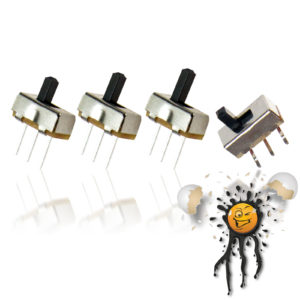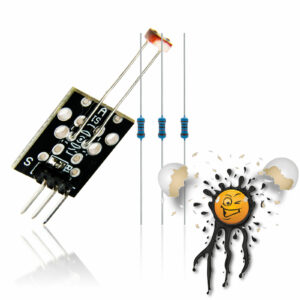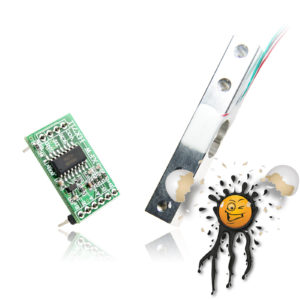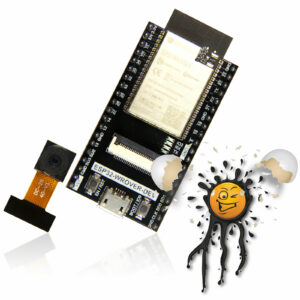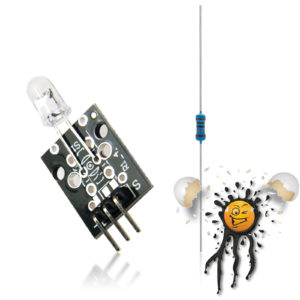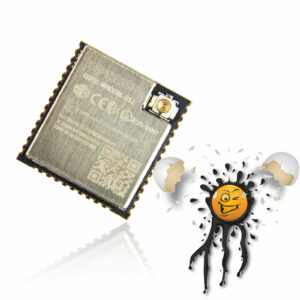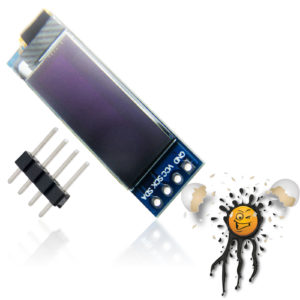Beschreibung
ESP32-S3-Zero Super Mini USB-C ESP32-S3FH4R2 2MB PSRAM ROM 4MB Flash Entwickler Development Board |
||||
|
ESP32-S3-Zero USB-C Super Mini Development Board incl. Pinheader © androegg
ESP32-S3-Zero USB-C Super Mini Development Board based on ESP32-S3FH4R2 © androegg
ESP32-S3-Zero USB-C Super Mini Development Board © androegg
ESP32-S3-Zero USB-C Super Mini Development Board © androegg
ESP32-S3-Zero USB-C Super Mini Development Board © androegg
ESP32-S3-Zero USB-C Super Mini Development Board Pinout top © androegg
ESP32-S3-Zero USB-C Super Mini Development Board Pinout bottom © androegg
|
Das ESP32-S3-Zero Super Mini USB-C Entwicklerboard basiert auf der Espressif ESP32-S3FH4R2. Das ESP32-S3-Zero Super Mini ist ein RISC V-Entwicklungsboard ist mit dem ESP32-S3FH4R2 von Espressif ausgestattet. Der ESP32-S3FH4R2 ist eine ultrakompaktes, generisch Wi-Fi + Bluetooth MCU-Modul, das über eine Vielzahl von Funktionen verfügt. Mit nur 23,5 x 18 mm eignet sich das ESP32-S3-Zero für eine Vielzahl von Anwendungsszenarien im Zusammenhang mit dem Internet der Dinge (IoT), wie beispielsweise
Der ESP32-S3FH4R2 verfügt über
Zur stabilen Anbindung in eine WLan basierende Netzwerkumgebung wurde das ESP32-S3-Zero mit einer ultrakompakten, leistungsstarken Keramikantenne ausgestattet. ESP32-S3-Zero Entwicklerboard Im Vergleich zu typischen ESP32 Entwicklerboards ist das ESP32-S3-Zero Super Mini Board mit nur 22,5 x 18 mm eine ultra kompakte Lösung. Die generelle Spannungsversorgung erfolgt dabei über die integrierte USB-C Schnittstelle in Kombination mit einem ME6217C33 LDO Spannungskonverter. Zur visuellen Statusausgabe wurde das ESP32-S3-Zero Super Mini Board mit einer WS2812 RGB LED ausgestattet. Die Signalsteuerung erfolgt dabei über den angebundenen GPIO21. Das ESP32-S3-Zero Super Mini Board benötigt keinen zusätzlichen USB TTL Konverter, sodass eine direkte, serielle Kommunikation über die USB Schnittstelle erfolgen kann (bei Bedarf entsprechenden Treiber installieren). Zur einfachen Anbindung der GPIO’s wurde das ESP32-S3-Zero Super Mini Board für 2 Pinleisten im Rastermaß von 2,54mm ausgestattet.Weitere GPIO’s können über Lötpads auf der Unter- und Oberseite angeschlossen werden.
Das ESP32-S3-Zero Super Mini Entwickler Board unterstützt
|
The ESP32-S3-Zero Super Mini USB-C developer board is based on the Espressif ESP32-S3FH4R2 SOC.
The ESP32-S3-Zero Super Mini is a RISC V development board equipped with the ESP32-S3FH4R2 from Espressif. The ESP32-S3FH4R2 is an ultra-compact, generic Wi-Fi + Bluetooth MCU module that has a variety of features. At just 23.5 x 18 mm, the ESP32-S3-Zero is suitable for a variety of application scenarios related to the Internet of Things (IoT), such as
TheESP32-S3FH4R2 is equipped with
For a stable connection to a WiFi-based network environment, the ESP32-S3-Zero was equipped with an ultra-compact, powerful ceramic antenna. ESP32-S3-Zero Development Board Compared to typical ESP32 developer boards, the ESP32-S3-Zero Super Mini Board is an ultra compact solution at just 22.5 x 18 mm. The general power supply takes place via the integrated USB-C interface in combination with an ME6217C33 LDO voltage converter. For visual status output, the ESP32-S3-Zero Super Mini Board was equipped with a WS2812 RGB LED. The signal control takes place via the connected GPIO21. The ESP32-S3-Zero Super Mini Board does not require an additional USB TTL converter, so direct serial communication can take place via the USB interface (install the appropriate driver if necessary). For easy connection of the GPIOs, the ESP32-S3-Zero Super Mini Board was equipped for 2 pin strips with a pitch of 2.54mm. Additional GPIOs can be connected via soldering pads on the bottom and top.
The ESP32-S3 Development Board supports
|
||
ESP32-S3FH4R2 LX7 Xtensa Module Features:
|
||||









